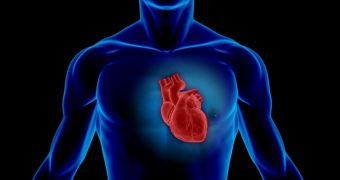Researchers with the University of Abertay Dundee in the UK must not in the least be familiar with just how inappropriate and downright cruel it is to mess with achy, breaky hearts.
Hence the fact that they are now busy growing teeny tiny human hearts in laboratory conditions with the sole purpose of getting the organs sick later on and using them to test various drugs.
Information shared with the public says that the hearts these scientists are now experimenting on measure no more than one millimeter in diameter. They are made from stem cells and beat on their own accord.
More precisely, the University of Abertay Dundee specialists say that their hearts are able to sustain a constant rhythm of about 30 beats per minute. Until they are made sick and start acting up, that is.
According to Medical Express, the medical condition for which the researchers hope to find a suitable treatment by experimenting on these miniature organs is known to the scientific community as hypertrophy.
The same source explains that individuals diagnosed with this medical condition have an enlarged heart that is unable to beat properly. Their heart ends up being larger than normal due to an abnormal growth of the cells in its makeup.
“Heart hypertrophy can be hereditary, can be caused by diseases such as diabetes, or can be caused by doing too much strenuous exercise. The disease causes the heart muscle to thicken and stiffen, and makes it harder for the heart to pump blood around the body,” explains Nikolai Zhelev.
“In some people, a life-threatening abnormal heart rhythm will develop, and this is the most common cause of sudden death in young people. Although there are treatments, these only help to control the symptoms, and there is no known cure at the moment,” the study leader adds.
Nikolai Zhelev and fellow researchers expect that their work with these laboratory-grown miniature human organs will help speed up the process to find a cure for heart hypertrophy. This is because the tiny hearts make it possible to test drugs in life-like conditions.
The scientists say that, although organs have been grown in laboratory conditions before, the miniature hearts that they are now toying with are the first to not only be created, but also made sick. “This is the first time it has ever been possible to induce disease in them,” Nikolai Zhelev says.
Since they first started work on this project until now, the researchers have managed to identify the molecules that cause heart hypertrophy and have even tested compounds that act on these molecules. Of these compounds, one initially intended to treat cancer was found to prevent hypertrophy.
“Although there is still a long way to go before the drugs become available commercially, we are extremely hopeful that we will one day be able to stop heart hypertrophy from developing in those at risk of the disease,” Nikolai Zhelev explains.

 14 DAY TRIAL //
14 DAY TRIAL //